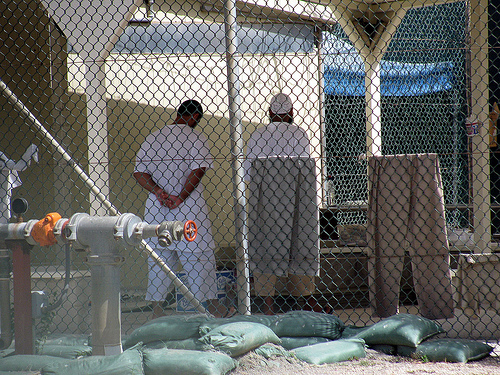Is Osama Bin Laden's Death A Vindication Of Bush-Era Policies?

In the hours after President Barack Obama’s Sunday night address announcing the death of Osama bin Laden, information about the intelligence operation began to come to light. One of the first tidbits released was that the information about the courier used to locate bin Laden was obtained from detainees in U.S. custody. One can presume this detainee, or detainees as the case may be, is being held at Guantanamo Bay, which begs the question – is bin Laden’s death vindication of Bush-era policies?
Former president George W. Bush came under intense scrutiny at home and abroad when the prison facility was built. This scrutiny dogged Bush until the end of his presidency and beyond. Many argued the camp violated provisions of the Geneva Convention, but the Bush administration was careful with their words, calling the detainees “enemy combatants” so as not to have to invoke the Convention.
But the controversy did not stop with the facility itself. Human rights groups accused the Bush administration of torture when news leaked that many detainees had been waterboarded – a procedure that simulates the feeling of drowning. Administration officials argued waterboarding did not amount to torture, citing the now-famous Yoo and Bybee memos.
In August 2002 the administration asked the Justice Department for advice on what interrogation techniques they could use on detainees and still maintain compliance with U.S. and international law. Deputy Attorney General John Yoo and Assistant Attorney General Jay Bybee wrote memoranda outlining what exactly constituted torture. In their legal assessment, torture was only committed if there was a “specific intention to inflict severe pain and suffering.”
The frustration of international law, and what some may consider the beauty, is that many definitions like “severe pain and suffering” are full of gray areas and open to individual interpretation. Bybee and Yoo, and as such the U.S. government, defined severe pain and suffering as something that leads to “permanent and serious damage. Such damage must rise to the level of death, organ failure or the permanent impairment of a significant bodily function.” The positions stated in the 2002 memos were softened in 2003 and 2004 and completely repudiated by President Obama in 2009.
During the Bush administration, waterboarding was used on high-value detainees, including alleged 9/11 mastermind Khalid Sheikh Mohammed. According to government documents, Mohammed was waterboarded 183 times. Much has been written on the subject in the nearly 10 years since the war on terror began, mostly questioning the technique’s effectiveness. But all that may change with the death of bin Laden.
A senior intelligence official reportedly said some of the critical information about bin Laden and his whereabouts came from Mohammed. By President Obama’s own admission, Sunday’s mission was the culmination of years of intelligence work.
How many Americans who danced in the street at the news of bin Laden’s death also criticized President Bush and his policies or called for the closure of Guantanamo Bay? Surely more than a few. It is too early to know how history will remember President Bush and his administration, but I believe that when more details emerge about the events leading up to May 1, 2011 “W” will remembered a little more favorably.
Reach Christine Detz here.



